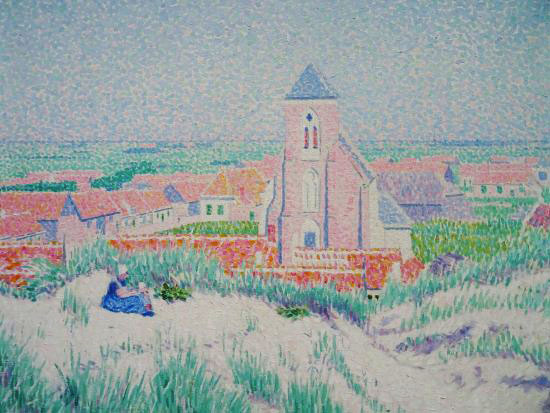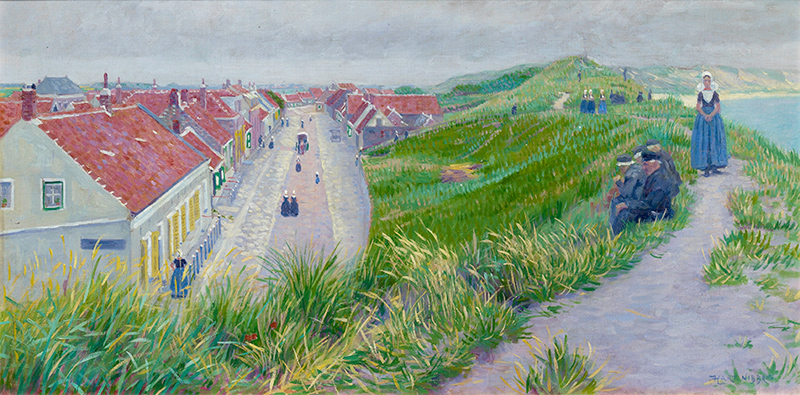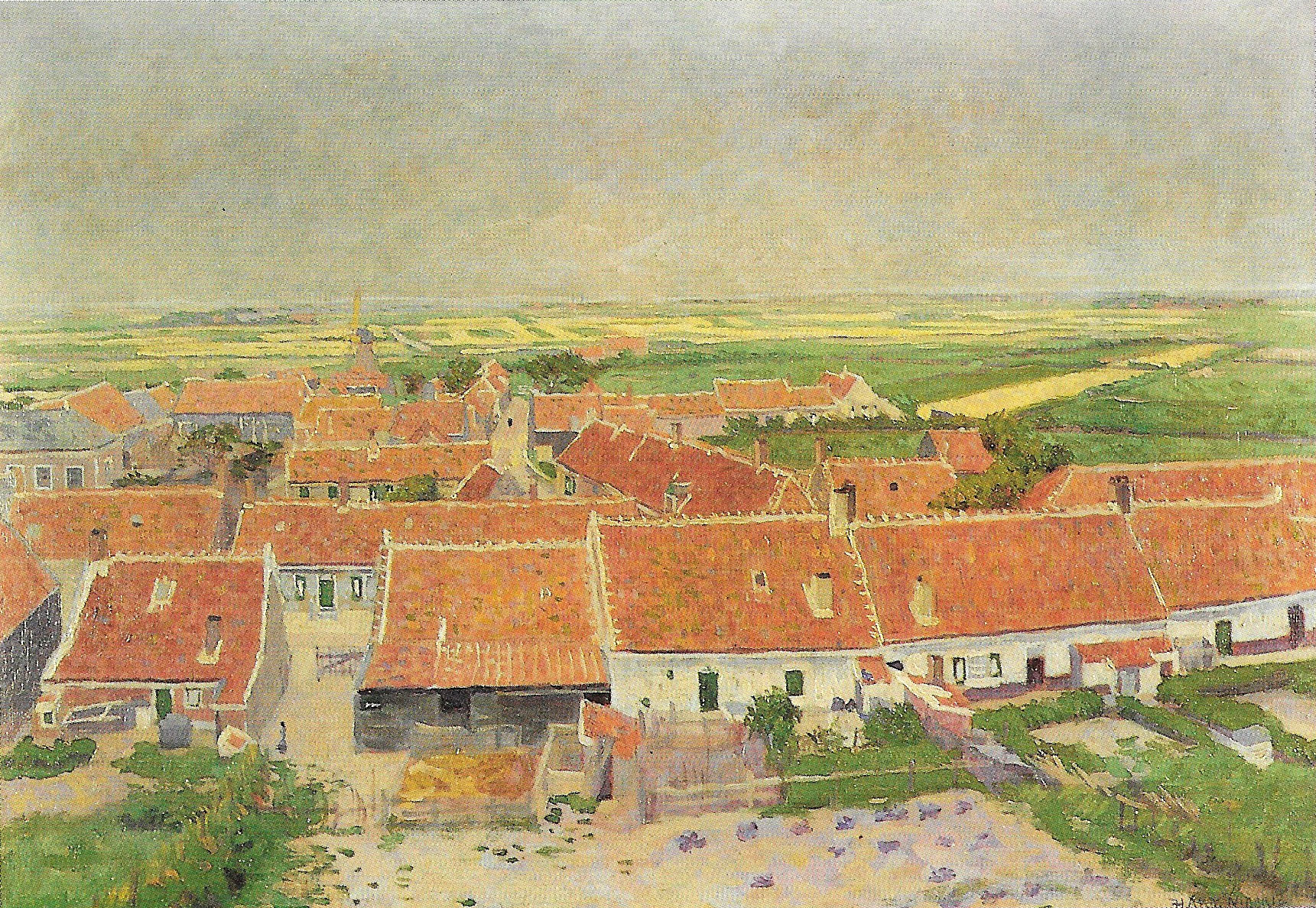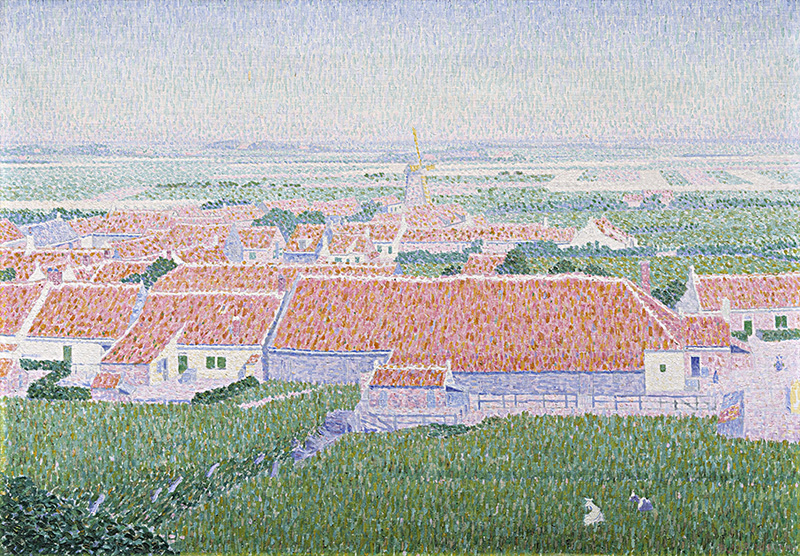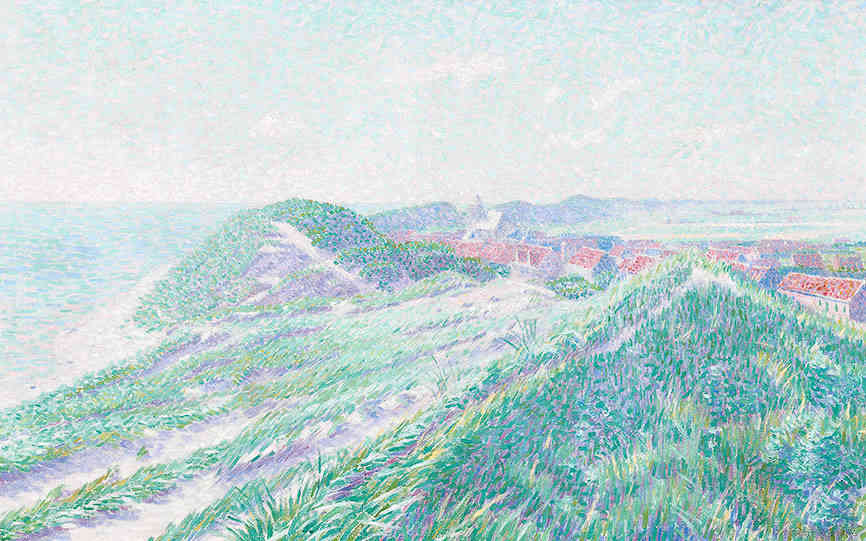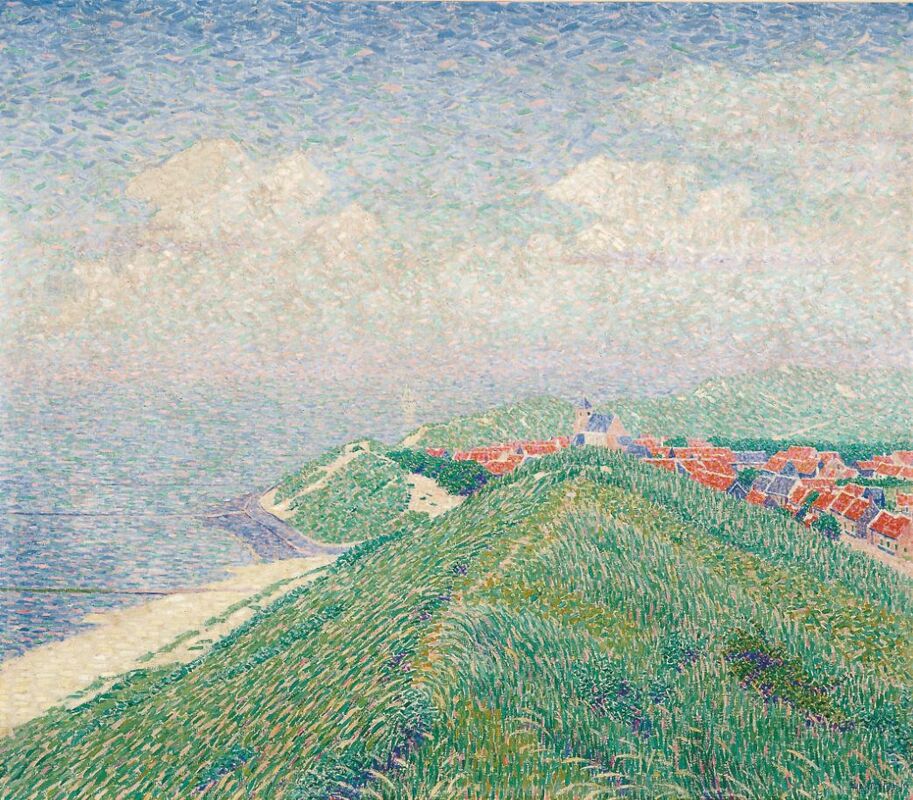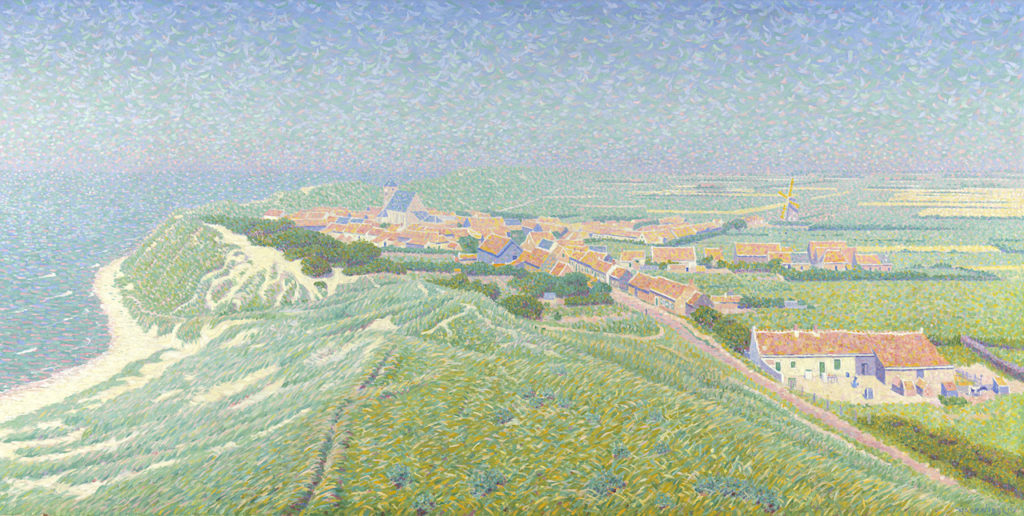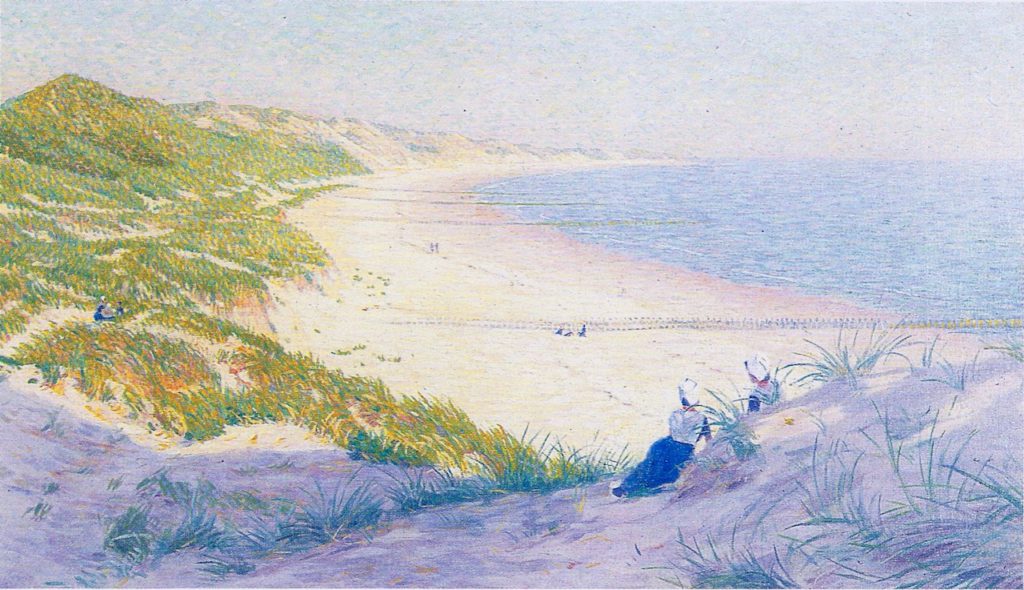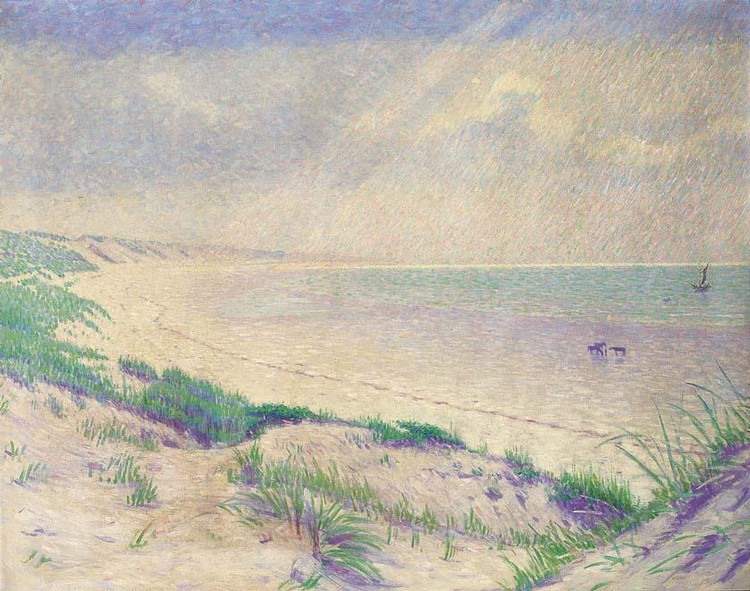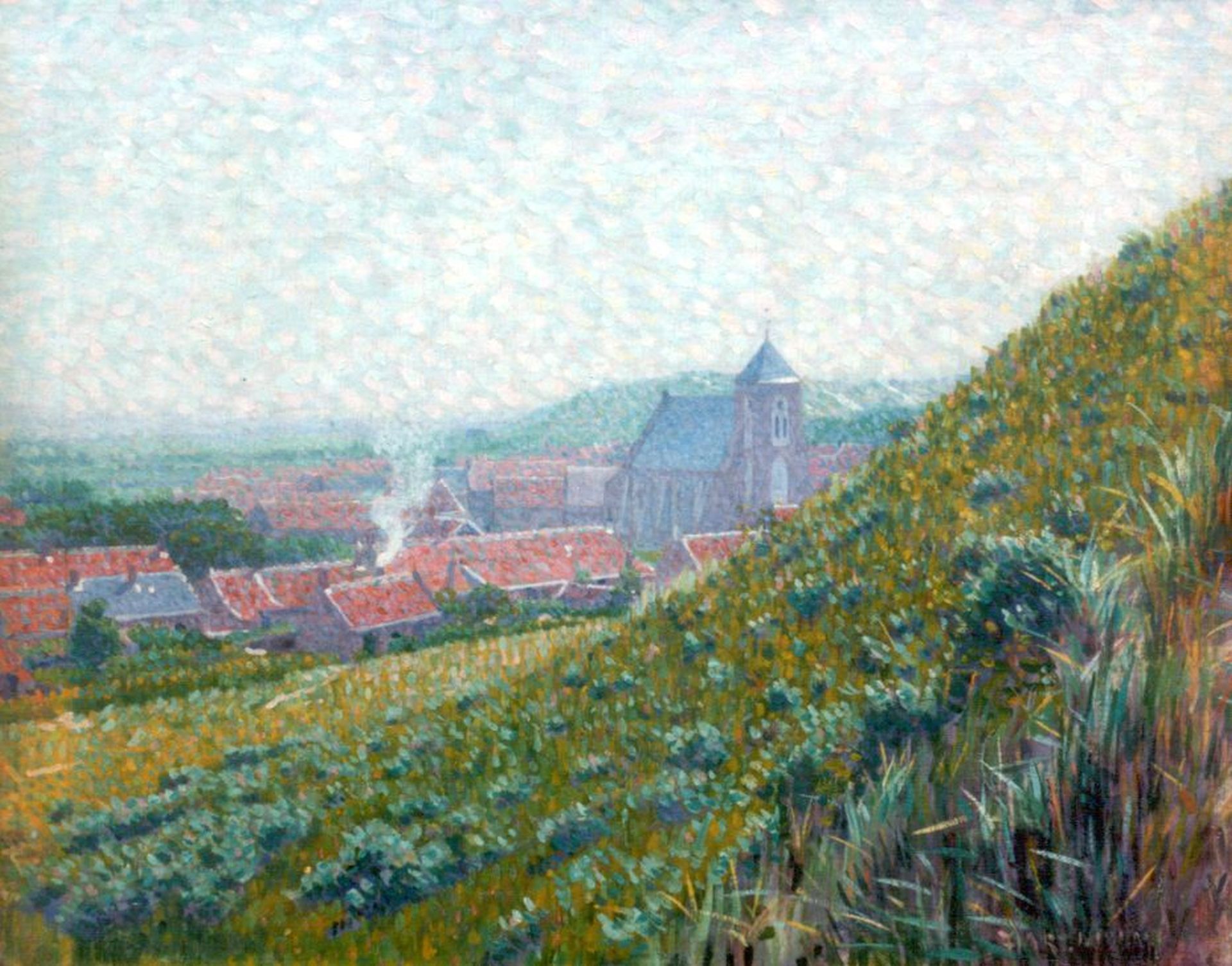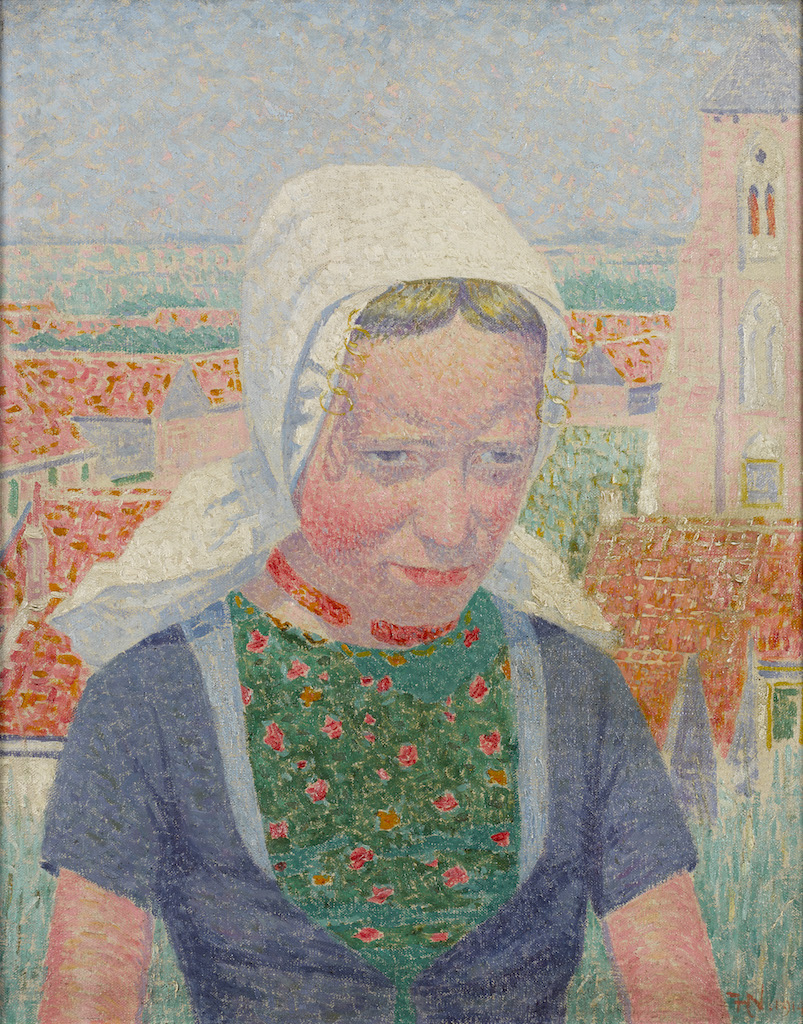Ferdinand Hart Nibbrig in Zoutelande

Ferdinand Hart Nibbrig (Amsterdam, 5 April 1866 - Laren, 12 October 1915) was a Dutch artist. The last summers of his life he painted and drew a lot in and about Zoutelande.
In his early years as a painter, Hart Nibbrig mainly worked in the impressionist style of the Amsterdam School. During his stay in Paris in 1880, he came into contact with the pointillism of Vincent van Gogh (1853–1890) and the luminism of Georges Seurat (1859–1891). Hart Nibbrig was subsequently one of the artists who introduced these two styles to the Netherlands.
Zoutelande
In 1910, Hart Nibbrig came to Zoutelande for the first time at the age of 44. He found it authentic and above all beautifully situated by the sea. Having previously visited various places on Walcheren, the painter was immediately so in love with the village that Hart Nibbrig bought a piece of land on top of the dunes within a month. In 1910, he had a summer house built on it, designed by the famous Austrian architect Georg Sturm (1855-1923). This new dune house, located at Duinweg 24, he named ‘Santvlught’. His entire family would spend every summer holiday there from 1911 until his death in the autumn of 1915.
To his friend and critic Albert Plasschaert (1874-1941), Hart Nibbrig wrote: ’Be one of the first to know. We have bought a small, but beautiful piece of land here. I find Walcheren more delightful by the day.’ And in a subsequent letter he continues: ’We are still in Laren but time is flying. On 1 June we are leaving for Zoutelande, then I will finally be able to work regularly again.’
Domburg Artist Group
During the same period, an artist colony formed in nearby Domburg, drawing inspiration from the unique Zeeland light. This group included Jan Toorop (1858-1928), Piet Mondriaan (1872-1944) and also Ferdinand Hart Nibbrig. Toorop took the lead in establishing an exhibition building where various local artists could display their works from the summer of 1911 to 1920. Hart Nibbrig was a member of the exhibition committee, exhibited there regularly, and designed the exhibition poster in 1905.
Although Hart Nibbrig was not as well-known as Toorop and Mondriaan, he was still an important link in the development of Dutch painting. Around the turn of the century, a new art style with a lighter colour palette emerged. Hart Nibbrig painted this style extensively in panoramic landscapes, for which he also chose a high viewpoint to observe the surroundings. The dunes of Zoutelande were such a high point. Hart Nibbrig painted numerous variations of these dunes with varying distances, focusing on the glitter of the Zeeland light. In Zoutelande, Hart Nibbrig also became freer and looser in his brushwork. He increasingly let the white of the canvas speak, and his brushstrokes sometimes became almost sketchy.
Zoutelande Residents
Besides landscapes, Hart Nibbrig also painted many portraits on Walcheren. Usually composed, but lived-in faces, which he brought to the canvas in soft colours. The portraits also increasingly featured (almost) anonymous models rather than portraits of specific people. Around the Catharinakerk in Zoutelande, Hart Nibbrig found most Zeelanders to paint. Notably, he paid the models 10 cents (approximately €4.5 cents) per hour to pose for him, a generous reward for the time. Many schoolgirls, especially peers of his sons and daughter, queued up to be painted by Hart Nibbrig.
However, a good relationship and contact between Hart Nibbrig and the inhabitants of Zoutelande were lacking. He did not speak the dialect and did not know their customs and living conditions well enough to connect. The artist himself did not mind. Hart Nibbrig mainly came for the peace, the beautiful surroundings, and to dedicate himself entirely to painting.
Photo Gallery
His paintings are now over 100 years old, but the dunes and village centre are still very recognisable. Below you will find a selection.
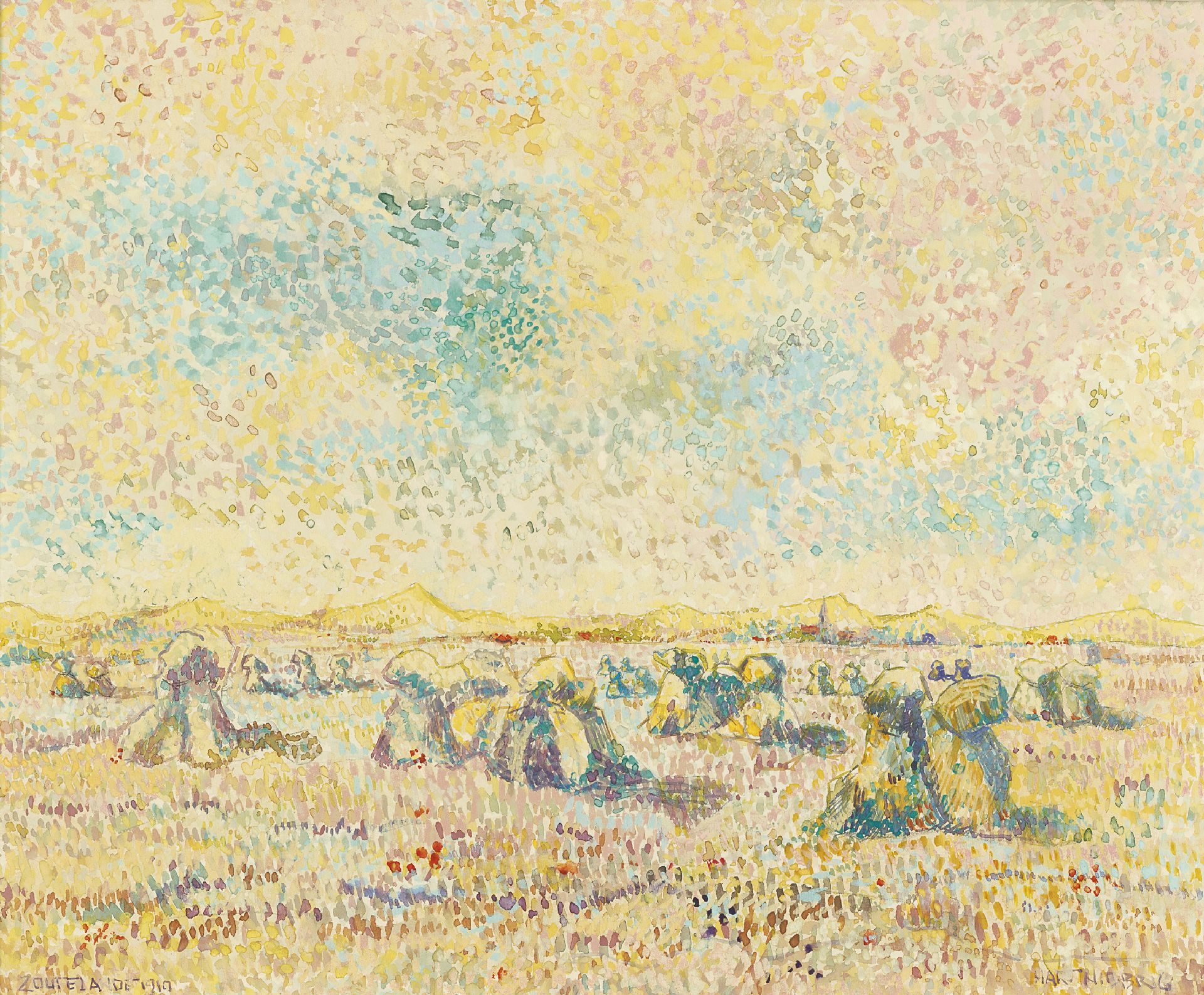
Oogst bij de duinen van Zoutelande - 1910
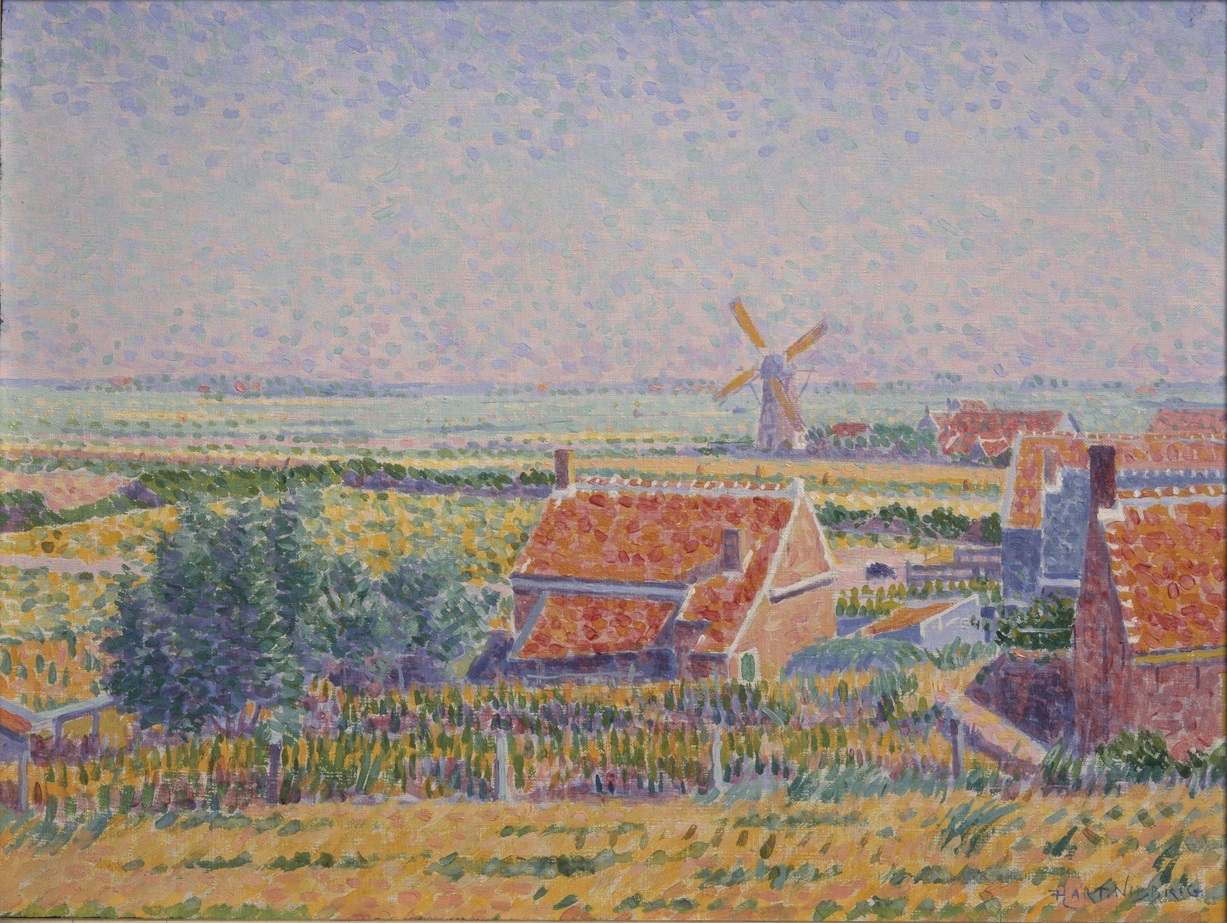
Zoutelande - 1910-1911
Centraal Museum, Utrecht
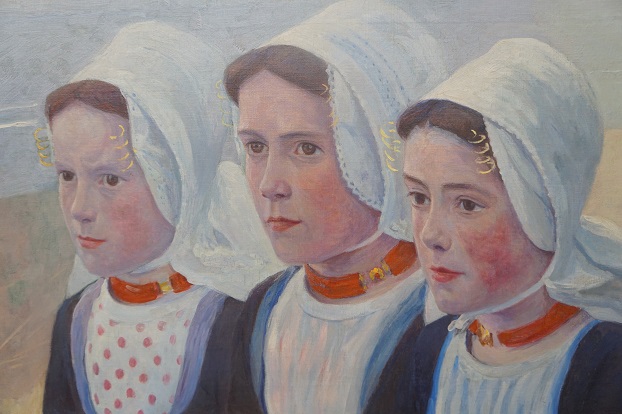
Drie meisjes uit Zoutelande - 1910-1915
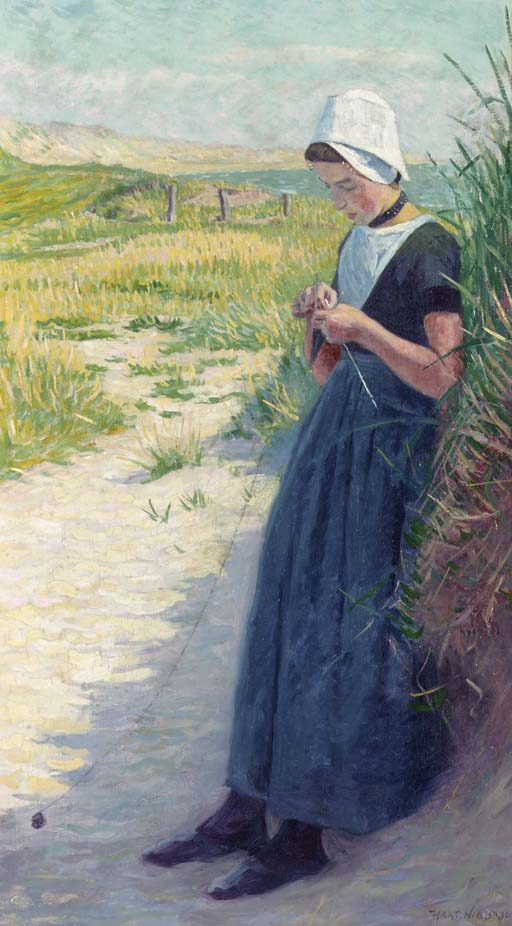
Breiend meisje uit Zeeland - 1910-1915
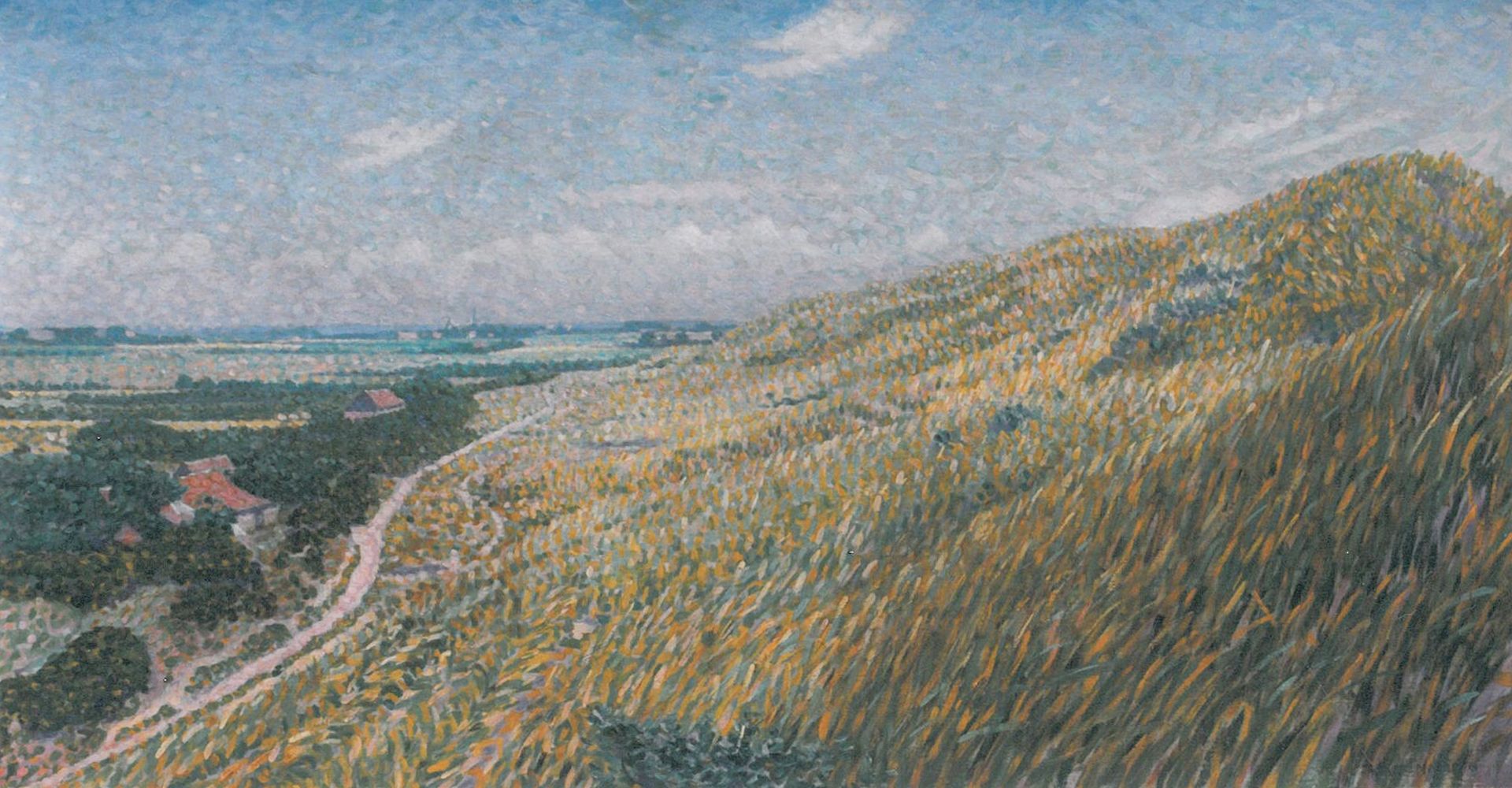
Zicht vanaf het duin bij Zoutelande - 1910-1915

Oude Martine van Zoutelande - 1914
Zoutelandse Ferdinand Hart Nibbrig-route
- Hoge Hilt;
De Hoge Hilt heeft nog steeds een aantrekkingskracht op fotograven en schilders. Geniet van het uitzicht. Bij zonnig weer kunt u de vuurtoren van Westkapelle en de Belgische kust goed zien (#1). - Catharinakerk;
Van deze Protestantse kerk schilderde Hart Nibbrig meerdere werken (#2, #3 & #4). - Dorpskern;
Vanaf dit punt in de duinen schilderde Hart Nibbrig van het dorp meerdere werken (#5 & #6). - ‘Santvlught’;
Op Duinweg 24 vindt u in de duinen zijn in 1910 gebouwde zomerhuis. Deze woning is privebezit, sinds 1998 een officieel beschermd rijksmonument en niet te bezichtigen. - Bramendal;
Vanaf deze duintop maakte Hart Nibbrig meerdere panoramische schilderijen van het dorp (#7, #8 & #9). - Deep dean;
Zichtpunt op de kenmerkende Zoutelandse duinenrij richting Vlissingen (#10 & #11).
Map
Get Directions
Musea
Onderstaande musea bezitten onder andere kunstwerken van Ferdinand Hart Nibbrig:

